by Wallace Wyss –
Harley Earl was GM’s first director of design (then called Styling). It was he who pioneered making clay models (inspired by his fashioning cars of clay in California as a kid). It was he who created the concept of the dream car (like the 1956 Pontiac Club de Mer), now called “Concept car”, meant to get the public excited by features to come out soon on production cars.
He spawned well over hundred of them, a lot of them inspired in the early ’50s by aircraft. One such car was destroyed but it is worth mentioning, and that is the Pontiac Club de Mer, the latter part of the name meaning “of the sea.” Though at that time Detroit auto makers rarely mentioned any name associated with a design other than the VP in charge of styling, research shows Paul Gillian designed it for Earl. Gillian headed up Pontiac styling from ’51-’58.
The Club de Mer was a two seater that had a lot of airplane-like features-a vertical tail fin, a brushed metal body (in this case aluminum) plexiglass individual racing windshields, and hidden headlamps. The car was low, too low in fact at just over 39 inches high, low considering Earl was 6’6″. I credit Earl with the concept of a car with a brushed metal finish. Oh sure some aluminum-bodied Porsche race cars raced in the ’50s that weren’t painted to save weight, but even today brushed metal is used in trim in modern cars. Not to forget the brushed metal roof in the ’58 Cadillac Eldorado Broughams. In some pictures, though, the Club de Mer looks blue, that could be because the Cerulean Blue was transparent. Depending on lighting the blue was not noticed as much.
I have never seen pictures of it proceeding under its own power so don’t know if it ran. Back then concept cars were rarely required to run, just look pretty on stage. The car was apparently put through the crusher as early as ’58 so it might have enjoyed a mere two years of glory. There remains some confusion over whether it survived, that confusion caused by a one-off fiberglass-bodied reproduction made by a GM outsider who sold it for $75,000 at auction.
Admittedly the original concept wasn’t that thought out for production (no top, no roll up side windows) but at least it stretched the envelope as far as what our future would be. The only features that reached production were the fin (thought the GM production fins were on the fenders not in the trunk lid center), the brushed metal (in trim) and disappearing headlights but at least the low body was a modern shape, ironically almost the same shape as the Mercedes 300SLR race car of the time, a model made infamous after one went into the crowd at Le Mans in ’55.
The engine was a Strato-Streak V8 rated at 300 hp. It had a transaxle in the rear which gave it 50:50 weight distribution, an idea later used on the production Pontiac Tempest. So this is a dream car that I won’t root for to be brought back, as much as I was impressed by it half a century or more ago when I could be dazzled by fins and racing windscreens.
Why? I fear it would not have weathered a transition into a road car because maybe a full width metal framed glass windshield might have made it look too pedestrian. Kind of like some female movie stars I can think of–who were sensational with one trademark hair style and color, but when they changed the color and style, and gained 20 lbs. they were quickly forgotten…
Let us know what you think in the Comments.
THE AUTHOR: Wallace Wyss is compiling an automotive fiction short story anthology which he promises will contain a couple of stories where the “characters” are legendary dream cars.
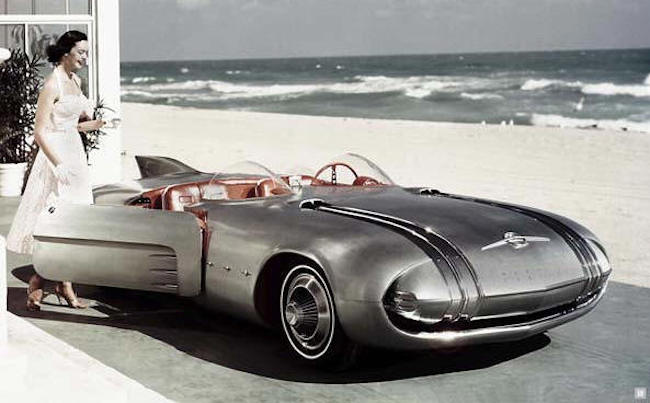
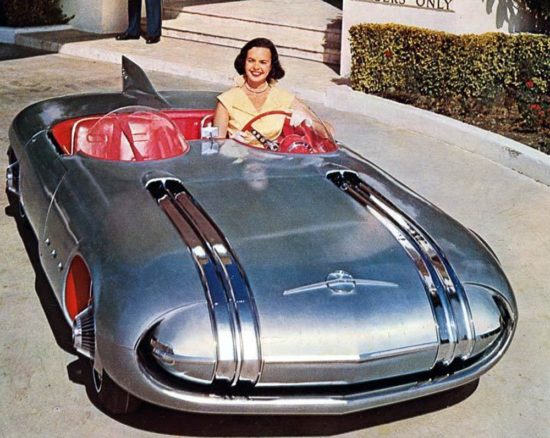
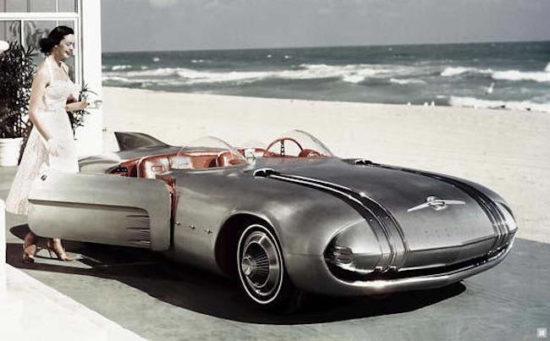
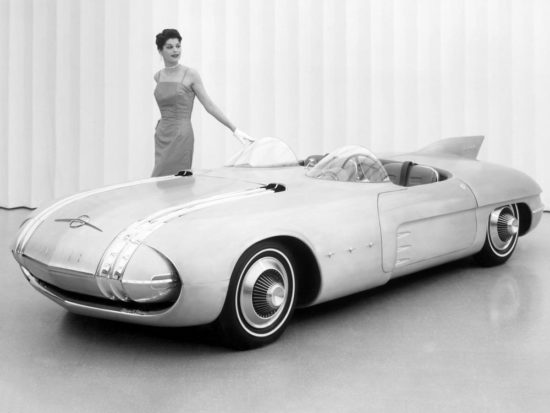
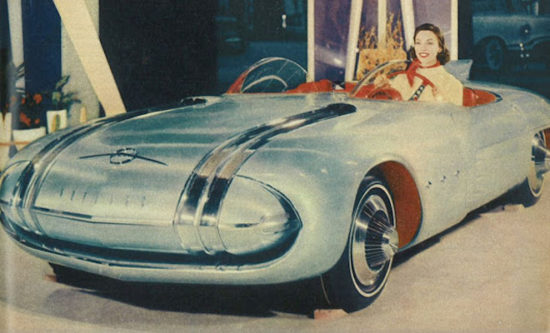
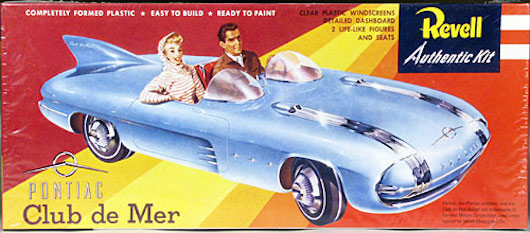


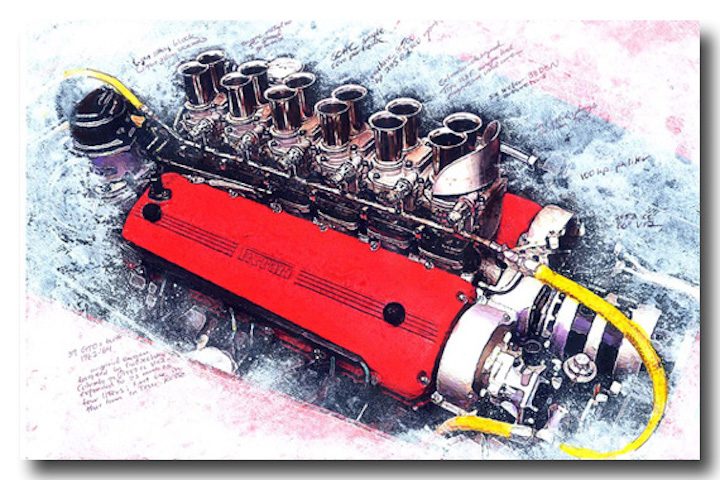

Can you just imagine those female models – dressed as they are – exiting that car after a spirited drive?!?
Yes, they would certainly need another trip to their hair stylists.
IIRC The original was just a styling buck and not a runner. Too it was destroyed….I suspect transporting a styling buck could be problematic…and could also started to deteriorate in 2-3 years……..
Th copy I understand did run but barely…only had an electric motor….Others may know more…..